On my way back to the hotel after 8 hours of walking around the city on my own on my first full day touring Sofia, Bulgaria, I passed in front of the Palace of Justice at 6pm on a Sunday night. There was a group of people standing around by the steps, including more blondes in one spot than I had seen all day walking around the city of Sofia. The sight jogged my memory of reading about this spot as the gathering point for the Free Sofia Tour walk. Sure enough, I just happened to be at the right place at the right time.
Palace of Justice, Sofia, Bulgaria
Terrorism Sofia April 1925 Style
The next point of the tour after the Palace of Justice was a church with a connection to terrorism in Bulgarian history. Bulgaria had its own rough period of terrorism in the 1920s from communist activists opposing the government.
Sveta Nedelya, Holy Nedelya Church or Holy Sunday Church, is a Bulgarian Othodox Church and one of Sofia’s landmark buildings, a cathedral built on the site of a 10th century church. The church was enlarged in an 1856-63 rebuilding of the church.
Cathedral Church Sveta Nedelya
Sveta Nedelya was bombed April 1925 by members of the Bulgarian Communist Party during a funeral service attended by many Bulgarian political elite, killing 150 and injuring 500. The bombed church was rebuilt in its modern form from 1927-1933.
Sofia Balkan Hotel, Starwood Luxury Collection
The center of Sofia is Serdika Station, where the city’s two Metro lines intersect. This location was my first exposure to downtown Sofia when I exited the Metro from the Sofia Airport ride and walked out onto the streets of Sofia at Serdika. I quickly learned that the way to cross the streets at Serdika is through the underground passageways of the Metro lined with Roman ruins.
From Serdika overground, one sees a set of three immense buildings designed in Socialist Classicism / Stalinist Architecture style. The Stalinist inspired ‘Largo’, constructed in the 1950s, rebuilt the World War II bomb damaged city center with an imposing architectural statement.
I became quite familiar with the Largo when my iPhone Maps guided me to the center of the busy streets between these buildings indicating I was standing at the Ramada Sofia hotel. At that point on a Saturday night, I was cursing myself for canceling my SPG category 2 reward night reservation for Luxury Collection Sofia Hotel Balkan in the building next to where I stood. In real distance, I was standing in the middle of the street by the Sofia Hotel Balkan about one mile from the Ramada Sofia.
Church of St Petka of the Saddlers
Church of St Petka of the Saddlers is a medieval Bulgarian Orthodox Church accessed from the Serdika Metro station. The construction of the Sofia Metro took 30 years. One of the issues delaying the project were numerous archeological discoveries unearthed in the underground construction. Serdika Metro Station is one of the highlights of a Sofia tour with underground passageways lined with excavated Roman era and medieval walls.
Serdica was the name of the ancient Thracian city occupied in the 4th century B.C. by Alexander the Great. The Romans conquered Serdica in 29 B.C. After being sacked by the Huns in 447 A.D., the city was rebuilt by Byzantine Emperor Justinian in the early 6th century. Many of the walls unearthed and preserved in Serdika Metro station are from 4th-6th c. construction.
ArcheologyinBulgaria.com has articles on 2010 excavations for the open air Serdika Museum.
A sign in English in Serdika station describes ‘Complex Ancient Serdica’ as an area over 9,000 sq.m. to the west and south of the Central Department Store. “The complex consists of eight streets, an early Christian Basilica, thermae, six large buildings and a late medieval church.â€
Sofia Central Department Store TZUM is one of the three massive socialist neoclassical buildings called the Largo at Serdika Metro.
Sofia Central Department Store TZUM
Melting Pot of Religions
From Serdika Metro street level you can see Sveta Nedelya, the Bulgarian Orthodox Church in one direction and the other direction along the street, looking in the direction to Central Train Station, a minaret one block away signals Sofia Central Mosque.
One block past Sofia Central Mosque is Sofia Synagogue, its dome seen in the background of the next photo, located behind the Sofia Central Market building Tsentralni Hali.
Bulgaria’s Ottoman History
Bulgaria shares its southeastern land border and Black Sea water border with Turkey. Sofia was controlled by the Ottomans for five centuries from the late 1300s to 1878. The Ottomans did not convert local populations to Islam, although there was administrative government control of the region.
Bulgaria, along with Romania, Montenegro and Serbia gained a degree of autonomous independence as separate nations following the Russo-Turkish War (1877-78). Bulgaria’s real independence as a country free of Ottoman rule dates from 1908.
Sofia Central Mineral Baths / Sofia History Museum
The Sofia Central Baths building is a structure from 1906-1913 built as public baths on a site that housed baths for centuries. The bath house closed in 1986. After restoration and conversion, the building opened in September 2015 as the Sofia History Museum.
The Presidency Building
Much of the Sofia Free Walking Tour is in a small geographic area around the Largo and Serdika Metro. On the back side of the large rectangular building with the Sofia Balkan Hotel is the Presidency Building.
Bulgaria’s constitution of 1991 established the office of President and the most recent election voted in President Rumen Radev on November 6, 2016, who took office January 2017.
Church St. George Rotunda
In spite of the guarded gates, the interior courtyard between the Presidency Building and Sofia Hotel Balkan is freely accessible to the public. Church St. George Rotunda is another site of excavated ruins and the oldest Eastern European Orthodox Church and second oldest building in Sofia dating from the 4th century.
Ivan Vazov National Theater and City Garden
On Sunday night the Free Sofia Tour passed through City Garden to the Ivan Vazov National Theater. The guide stressed the importance of Ivan Vazov to tourists, indicating this Bulgarian poet, novelist and playwright was a rock star of his time in Sofia. Vazov took part in the Bulgarian revolutionary movement of the 1870s when he was in his 20s. His 1893 novel Under the Yoke about Bulgarian village life under Ottoman rule and rebellion is considered the most famous piece of Bulgarian literature.
Ivan Vazov Theater was a happening place Sunday night when the tour passed through the square as a group of people danced to traditional folk music. It was a public dance with many people in the park spontaneously joining in holding hands with the dancers below within a couple minutes after my photo.
The next night I wandered into this same square around 6 pm as a rock band blasted out amplified tunes I had heard a couple blocks away and followed the sound to the theater.
Baba Marta Day and Martenitsa
After walking around Sofia city streets for eight hours Sunday, there was one very peculiar aspect of the items being sold at dozens of street vendor booths across Sofia. Tables all around town had red and white ribbons and pieces of wool yarn for sale.
Seriously, I wondered why so many people were even looking at these little yarn items so prevalent at booths all across the city?
Baba Marta Day – ‘Grandma March Day’ is March 1 and a Bulgarian cultural holiday.
Martenitsa are wristbands and tassels of red and white colored threads worn from March 1, until the first stork or blossoming tree is seen, signifying the arrival of spring. Then, the martenitsa is tied to a tree branch.
Martenitsa tied to a tree in City Garden, Sofia.
St. Sofia ChurchÂ
Sveta Sofia is the second oldest church in Sofia dating from the 6th century reign of Justinian I (527-565). The church gave its name to the city in the 14th c. The site was the location of a Roman-era necropolis.
St. Sofia Church
The Free Sofia Tour walk ended in front of the lion at the Monument to the Unknown Soldier.
A location at the south end of the St. Sofia Church was selected. The work was speedily executed and the finished Monument was unveiled with the great military celebrations held in 1981 on the occassion of the 1300th Anniversary of the Bulgarian State. The imagery bears all the hallmarks of the program requirements – modest and solemn, lit by the light of the eternal flame, decorated with laurel wreaths made of bronze and a carved excerpt from the poem ‘Novoto Grobishte na Slivnitsa’ (Slivitsa’s New Cemetery) written by the Bulgarian writer Ivan Vazov:
‘Bulgaria, they died for you,
you was the one worthy for them, and
they were worthy of you, Motherland’
And here I parted ways with the guide and fellow tourists to Sofia. A tip and adieu and I crossed the road in front of St. Alexander Nevsky Cathedral (1882-1912), one of the largest Eastern Orthodox cathedrals in the world and the second largest cathedral in the Balkans next to Belgrade’s Cathedral of St. Sava.
Alexander Nevsky Cathedral Sofia
I walked another block and saw the Radisson Blu Sofia and several happening pubs and cafes in the neighborhood past the hotel. After about 30 minutes walking in the wrong direction for my hotel, I walked another 30 minutes back in the general direction of the central train station area hotel and finally reached my bed some 13 hours after leaving my room that day.
Sofia was a good trip.


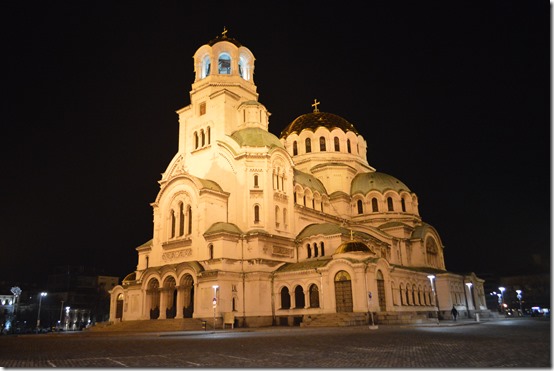


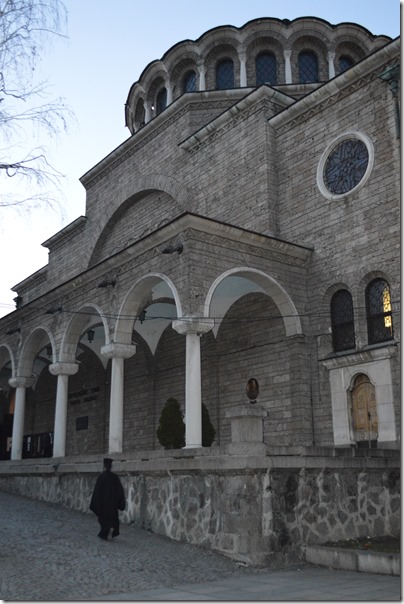

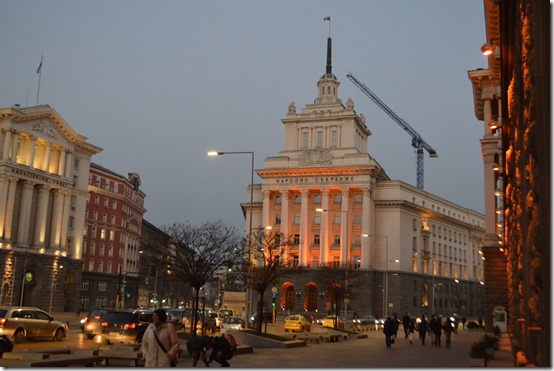
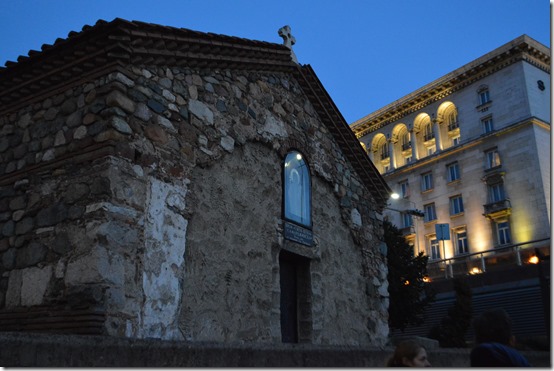
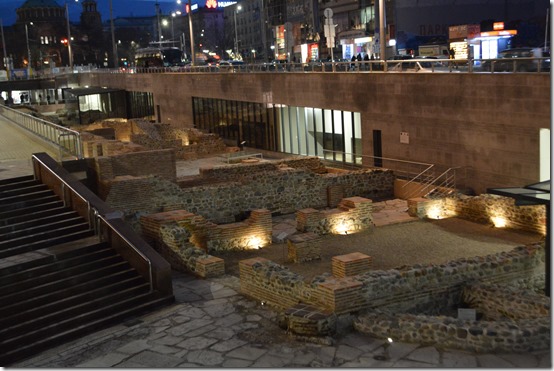
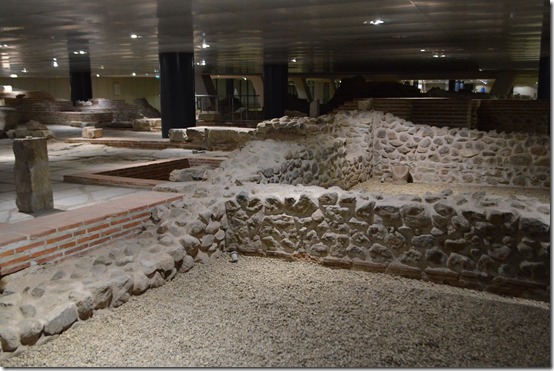
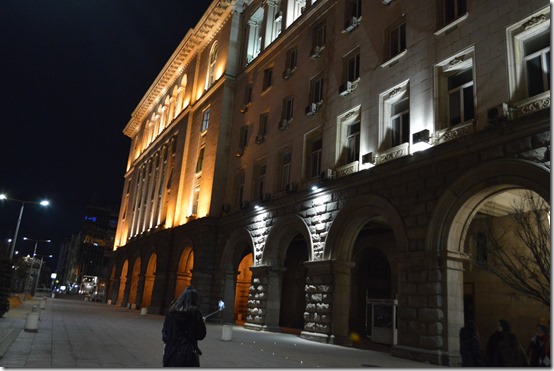
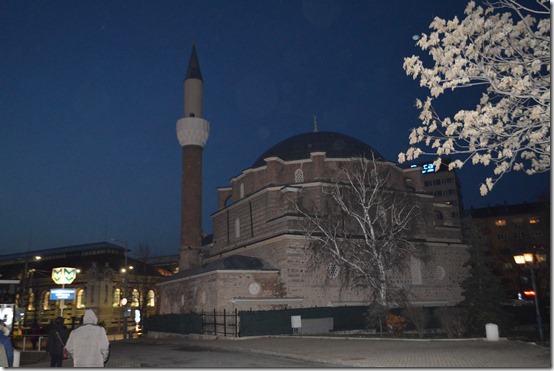
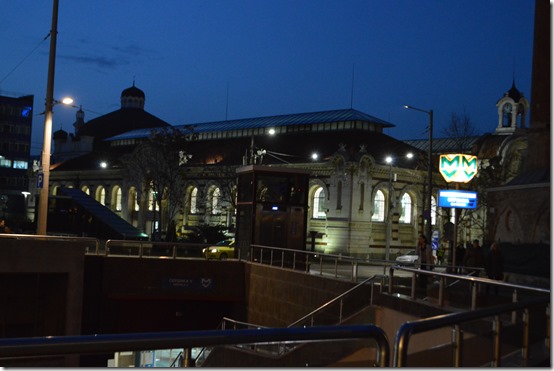

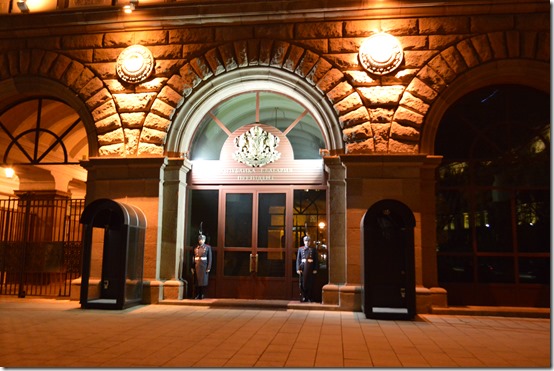
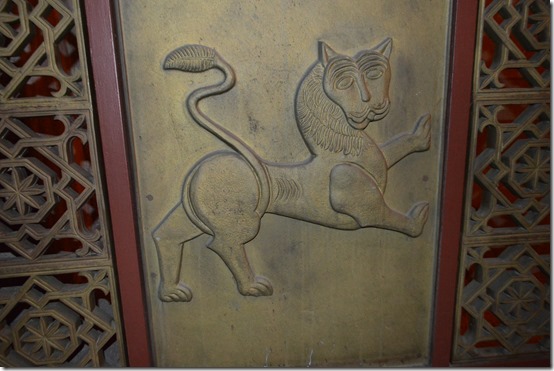

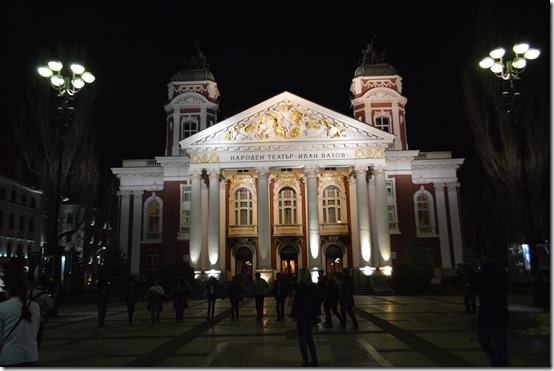

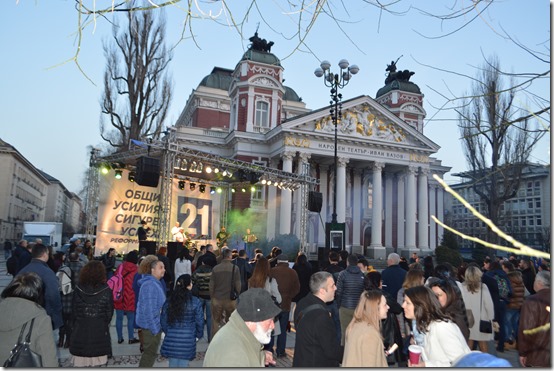

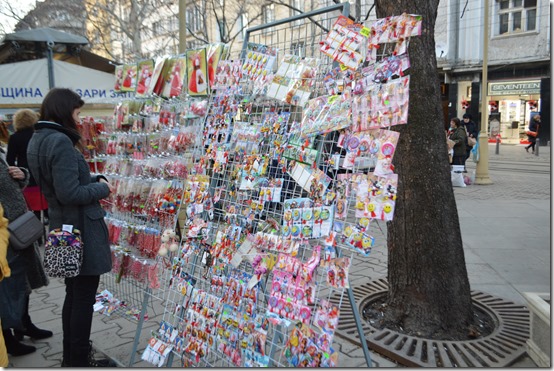
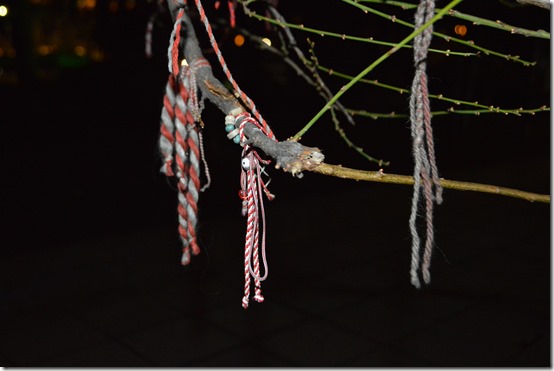
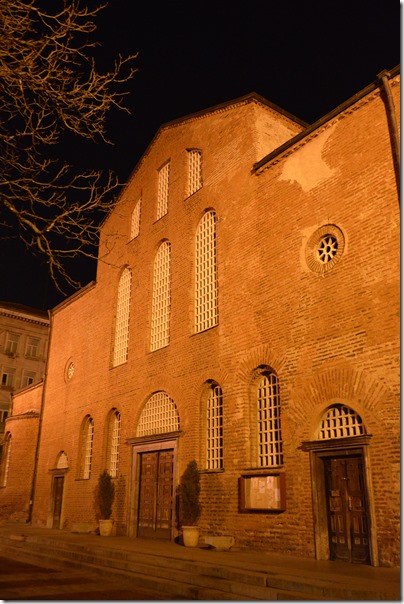
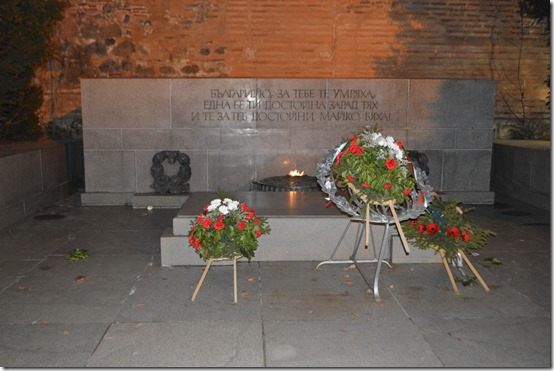

4 Comments
Comments are closed.